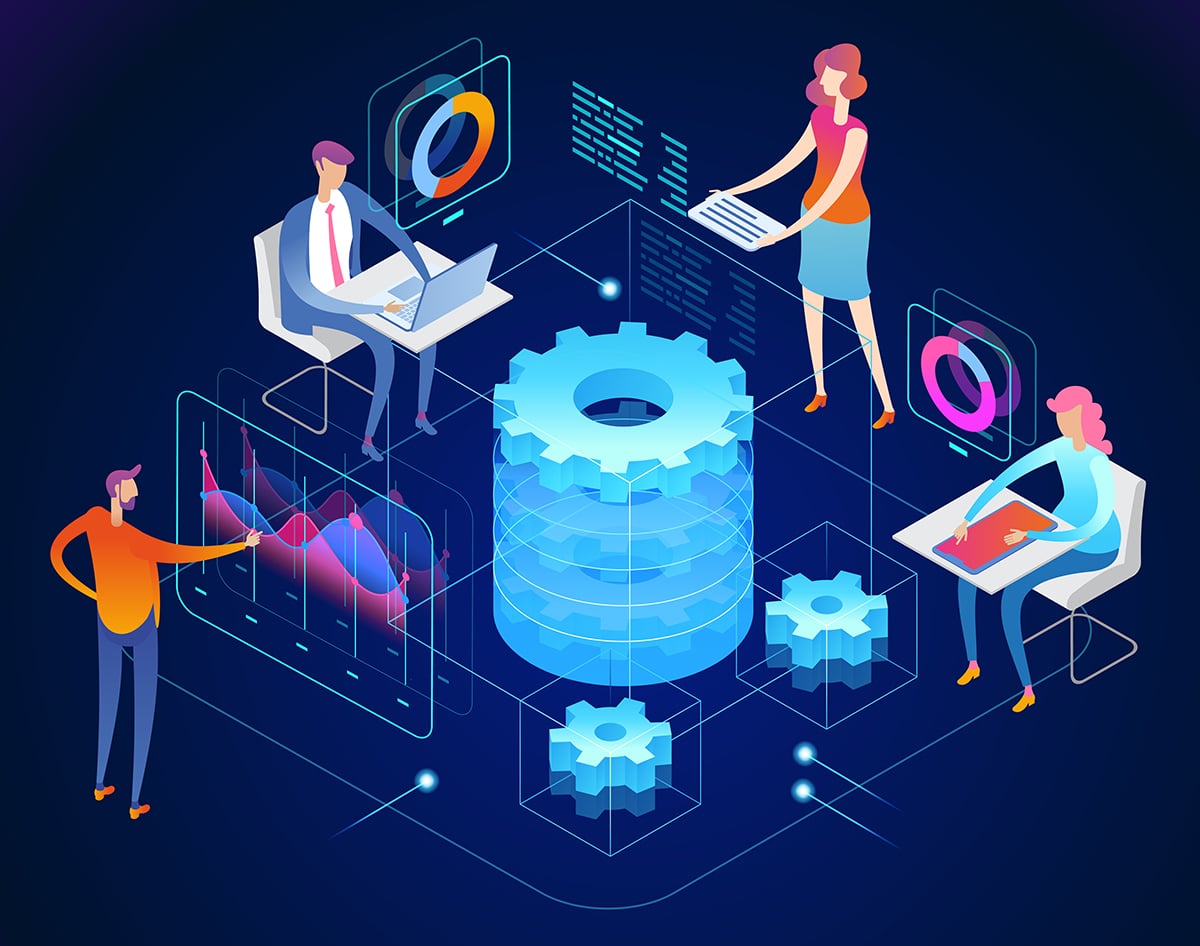
Workflow everything with ServiceNow and AIOps
Companies of all sizes are continually seeking technologies to increase productivity, improve customer and employee experience, and ultimately drive business growth. This desire applies across functions of customer service, IT support, employee service as well as business-specific processes. Today, leading companies are turning to their vast data stores, artificial intelligence and machine learning, and process automation to achieve these outcomes.
ServiceNow, once solely focused on IT service management (ITSM) and workflows, is increasingly enabling digital workflows across the enterprise. And, many organizations are expanding their initial ITSM investment to leverage ServiceNow as the platform where work gets done. Today, almost half of ServiceNow’s growth goes beyond IT to customer service, employee service, industry-specific processes, and 'bring your own workflow' low-code development.

Is pet tech the future?
According to Globe News Wire, the pet tech market is expected to reach £14.39 billion ($20 billion) worldwide by 2027. With more and more of us choosing to adopt a new furry friend into the family, the opportunities in developing pet tech are undeniable. As with any other sector that flourishes, supporting technology can become a goldmine for businesses and consumers alike, paving the way to more efficient processes.
From self-cleaning litter trays to tracker apps, the pet tech industry is set to shape the future of pets for owners and businesses alike. Let’s take a closer look.

A series of unfortunate events… Or more? What story the recent cybersecurity attacks could be telling
Recently there has been a dizzying number of major breaches disclosed within just months and sometimes weeks of each other. I’ve been paying close attention and doing a bit of research into the most recent data breaches, especially the more notable ones. The most recent heavily covered incident, the JBS hack, is already having an impact on the food industry.
In the last seven months we have seen the following things happen:

Five tips for optimizing your IT team's time
Today, IT teams are short-staffed and overworked like never before. And COVID-19 has made IT professionals busier than ever, with record numbers of people working from home and using more technology resources from remote locations. This can lead to additional projects and even more support issues. IT teams are constantly juggling between day-to-day maintenance activities and more strategic, long-term projects that can drive innovation and have a positive impact on an organization.
In theory, it would be ideal to have 70 percent of a team’s time spent on strategic projects and 30 percent spent on daily maintenance tasks. In reality, the opposite numbers are probably true. So, how can you shift that dynamic and get more time spent on strategic, high-impact projects, rather than all the maintenance work? Here are five tips for improving your IT team’s efficiency and optimizing their time.

Can businesses return to 'normal', post-pandemic?
Few businesses have been able to avoid the impact of the COVID-19 pandemic -- the necessity of strict social distancing and national lockdowns including closure of non-essential retail created a major financial strain on organizations across the country.
Recent figures paint a promising picture of businesses’ recoveries. Indeed, the ONS recorded an increase of 9.4 percent in investments made by businesses in Q3 2020. However, there is still a tremendous distance ahead on the path to recovery; the latest figures show Q1 2021 investment levels still 18.4 percent lower than Q4 2019, the last wholly pre-pandemic quarter.

3 reasons QA and monitoring must merge to support new customer expectations
Customer expectations have dramatically shortened the software development cycle. The question now for development teams is how to ensure quality assurance and innovation.
Traditionally, QA was a major step in the process. Developers would create the software. Quality assurance engineers would test it. But customers now want new versions and features more quickly, and the traditional approach to QA simply takes too much time.

Why a web hosting partner could save you a headache
When you’re getting a website off the ground, lots of factors come into consideration -- from the design and functionality, to the content that will populate the site. Hosting is one area that shouldn’t be forgotten about.
Partnering with another company to support your web capabilities can seem like a daunting task. But if you ask the right questions up front and do your research properly, you’ll avoid getting stuck with a service that doesn’t meet your needs. Before signing on the dotted line for any website hosting plan, make sure you take time to consider the following things.

How the pandemic has impacted communication service providers across different vertical markets
The COVID-19 pandemic has had a lasting impact on countries around the world and, even with the successful vaccination roll out, regions are still moving in and out of lockdowns. Containment measures have, as you would expect, caused a substantial drop in business activity across Europe, especially in contact-intensive sectors. Economic growth is expected to pick up throughout 2021 as vaccines become more widely distributed. However, communication service providers have seen a significant surge in demand because of the pandemic. Overnight they saw demand spike as organizations moved to a distributed workforce.
With many businesses now committing to a more hybrid working model, communication service providers will continue to experience high demand for the foreseeable future, which presents a unique set of challenges.

4 ways to optimize workforce productivity in 2021
As organizations become global and teams get increasingly distributed, establishing and maintaining workforce productivity becomes crucial to drive business success. For example, during the Covid-19 pandemic, organizations realized that, in the absence of proper infrastructure and setup, global teams battle several challenges such as poor communication and fragmented collaboration that can deter any organization's growth.
With dispersed resources and remote onboarding of people and teams, getting the correct technology setup and helping the workforce perform optimally becomes extremely challenging.

AI isn't biased, but you might be
We've all seen the headlines suggesting that AI is racist and sexist. However, many people overlook one important fact -- that AI is simply a tool, incapable of being inherently biased. That’s not to say AI isn’t capable of producing biased outcomes -- as the headlines show, it certainly is. But it can only ever be as biased as the data upon which it relies.
So how can developers and marketers avoid deploying biased AI? Unfortunately, there is no magic one-size-fits-all solution. As with any successful technology deployment within a business, it requires a thorough understanding of the datasets you are working with, and the outcomes AI can produce with said data. The first step is knowing what to look for.

Architectural options for ensuring high availability and disaster recovery in SQL Server
Architecturally speaking, what’s the difference between configuring SQL Server for high availability (HA) and configuring it for disaster recovery (DR)? The terms HA and DR are so often paired that one might imagine them to be the same -- when in fact they are distinct approaches to mitigating different risks.
Let’s start by distinguishing the risks. Let’s say your mission critical SQL Server infrastructure resides in a datacenter in Orlando, Florida. It doesn’t matter whether it’s your own data center, a co-location facility, or a cloud data center. A category 5 hurricane causes a catastrophic failure of the data center and your critical SQL Server infrastructure goes offline.

7 reasons to make your website a progressive web app
These days progressive web applications (PWAs) are gaining their share in the web world. They have become a decent alternative to native mobile applications. There is even an opinion that progressive web apps have enough potential to become the future of the web.
In this article, we will discuss the core benefits of this advanced technology. You will find out what makes PWAs so special and why you should consider turning your website into a progressive web app.

Best practice steps for safe data sharing
Digital data is everywhere. You only have to look at how much data is transmitted over the internet on a weekly, daily, hourly, or even second-by-second basis to understand just how much data is being shared. In fact, at the start of 2020, the amount of data in the world was estimated to be 44 zettabytes. Given how much data is created every day, pundits predict that this will likely increase to 175 zettabytes by 2025.
As employees and businesses, we are constantly sharing information. Likewise, the number and variety of entities and individuals we share that information with has grown exponentially. No longer is this simply restricted to the perimeter of our own businesses, but it now extends to partners, suppliers, customers, prospects, and influencers around the globe. Consequently, the challenge for most organizations now is: how do we share data easily, quickly, yet also securely?

Leveraging MISP and TheHive when you create your cyber threat intelligence practice
Many CISOs I speak with across Europe tell me their cybersecurity teams rely on two, primary open-source platforms within their security operations (SecOps). The first is Malware Information Sharing Platform (MISP), that allows the storing and sharing of indicators of compromise (IoCs) with other MISP users. The second is TheHive, designed for security incident response (IR). The two solutions are tightly integrated so that SOCs, CERTs and any security practitioner can act more quickly when incidents happen.
For organizations with limited resources or just beginning to build a SecOps practice, MISP and TheHive are easy-to-use tools to help your teams react to malicious threats. The next step to proactively mitigate risk from the full breadth of threats your organization is facing, is to leverage MISP and TheHive to create a cyber threat intelligence (CTI) practice. To do this, you need to consider a third platform that integrates with these two solutions and provides five essential capabilities for a CTI practice so your teams can get ahead of threats.

Why digital transformation is an ongoing process for enterprises
It’s already well known that COVID-19 accelerated digital transformation. McKinsey estimates that it shot forward by about 7 years of progress within just a few months, and CNBC reports that 85 percent of companies sped up their digital transformation plans, but the real question is what happens now?
You could say that there are 3 main pillars to digital transformation, and they don’t necessarily take place one after another. These pillars include:

